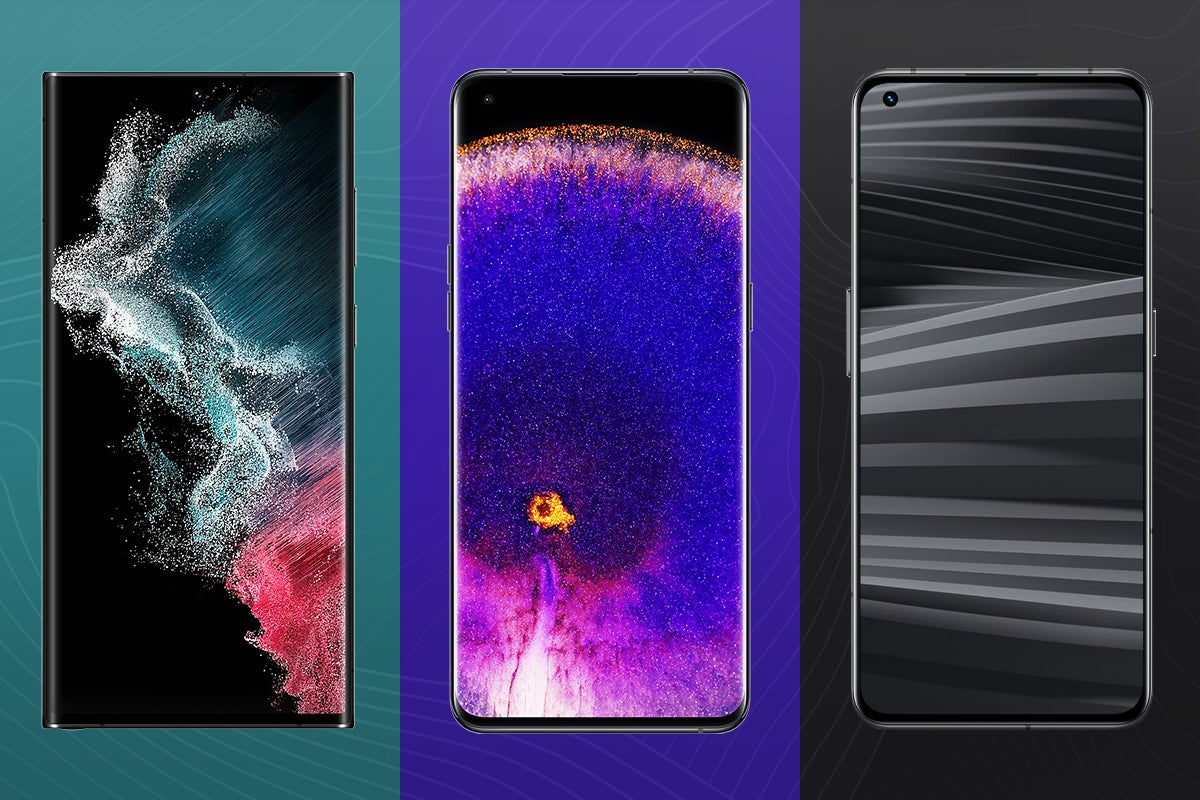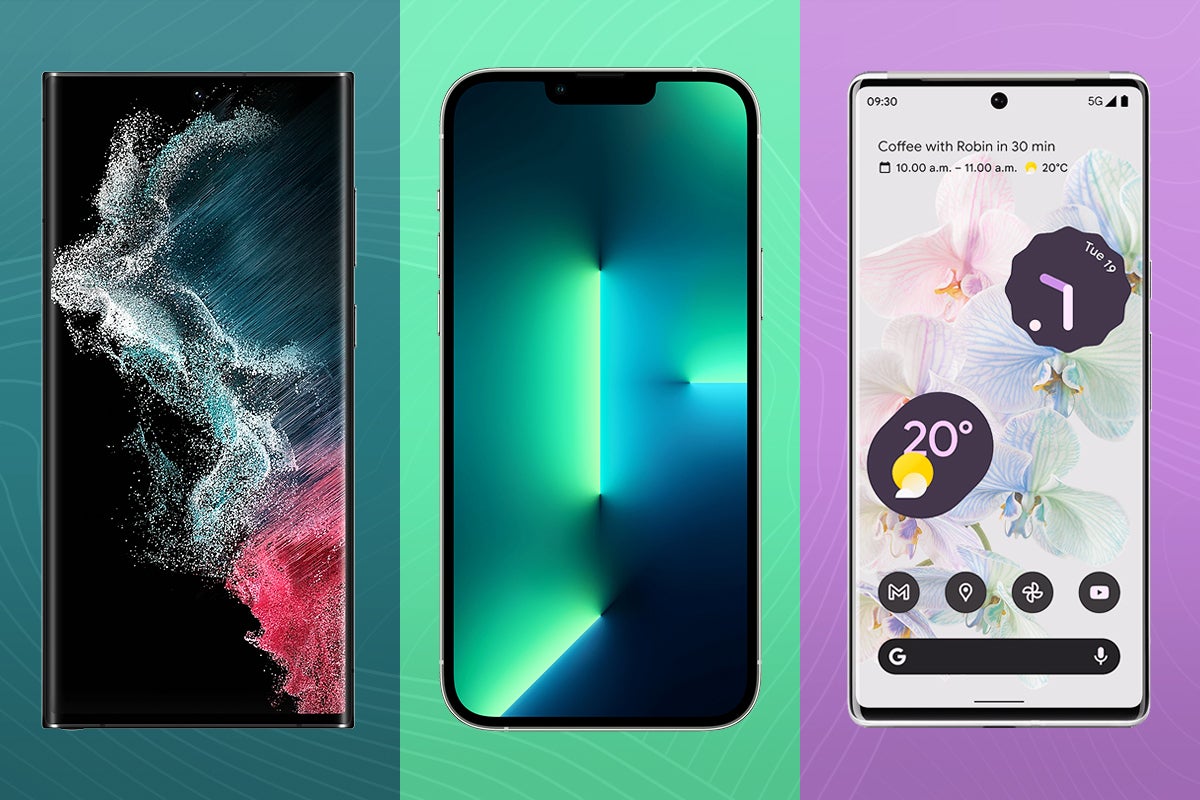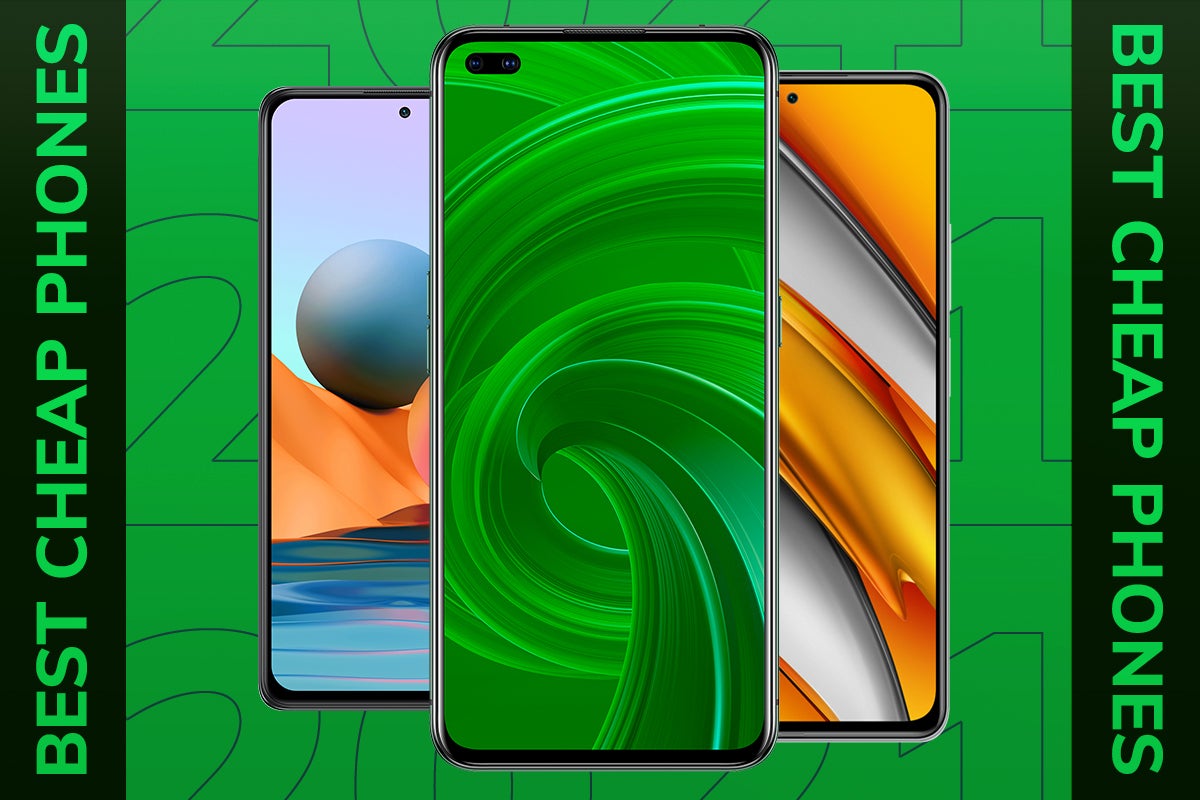Nokia X20 Review
Failing to keep up
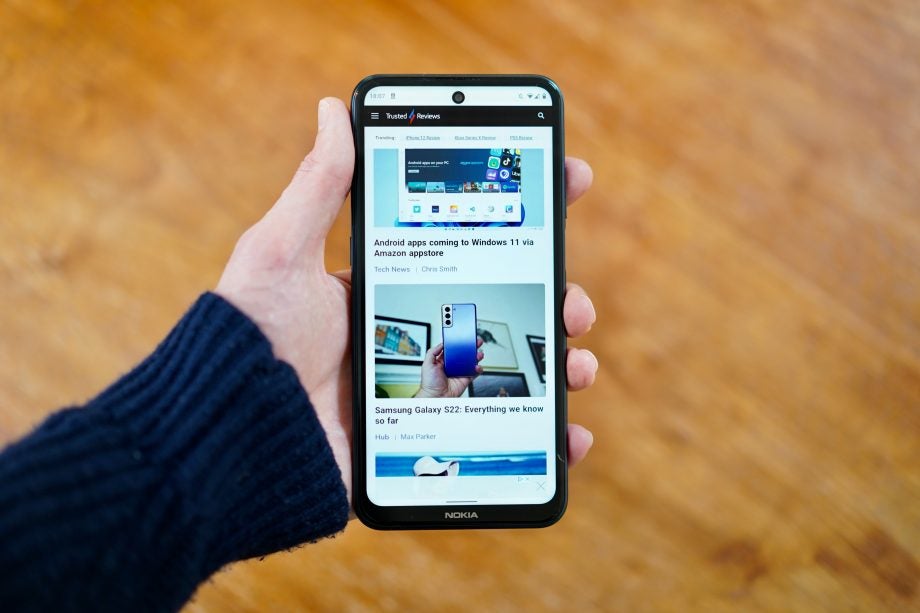
Verdict
The Nokia X20 offers a deeply dependable package delivering a robust design, excellent stamina, clean software, and the promise of three years of Android updates. But there are far better choices out there.
Pros
- Great software support promise
- Clean Android 11 OS
- Two-day battery life
Cons
- Poor performance for the money
- Underspecced display
- Heavy body
Availability
- UKRRP: £299
- USARRP: $399
- EuropeRRP: €349
- Canadaunavailable
- Australiaunavailable
Key Features
- 5GThis is another cheaper phone packing 5G connectivity
- Clean AndroidNokia has one of the cleanest Android skins, with multiple years of promised updates and no bloatware
- CameraNokia has teamed up with Zeiss for the camera
Introduction
At a time when confidence in our tech companies is at an all time low, it’s easy to find yourself yearning for simpler times when a nigh-on indestructible Nokia phone would do what you asked of it – and nothing more – for years at a time.
The Finnish company’s hegemonic heyday may be firmly in the rearview mirror, but local custodian HMD Global is keen to capitalise on the lingering sentiment for the brand. Enter the Nokia X20 – the sales pitch for which can be summarised as: “We’re Nokia. You can trust us”.
You’re getting a solid design, 5G connectivity, clean software, and the promise of three years of Android updates in a package that costs only £299/ €349. This focus on dependability over all else is both refreshing and reassuring, but other areas have been neglected in the process.
With the likes of the Xiaomi Mi 11 Lite 5G and the Poco F3 offering better performance for similar money, the less risk-averse will find better prospects elsewhere.
Design and Screen
- Tidy plastic body
- Quite thick and heavy
- Poor 60Hz LCD
The Nokia X20 is the top model in HMD Global’s most recent range, but don’t think of it as a flagship. This is still a phone aiming for the best cheap phone crown and it’s all plastic.
Still, reliability and durability are very much the operative words here. As part of its press push, Nokia included a video highlighting the various forms of torture the company had put its latest phone through. Buttons, ports and the phone’s chassis were all subjected to various mechanical stress tests, while basic IPX2 certification ensures it will stand up to a light shower.
This would seem to explain the reasons that the Nokia X20 is such a tank of a phone. A 168.9 x 79.7mm footprint means that it isn’t especially large head-on, but a thickness of 9.1mm makes it rather chunky. Meanwhile, an official weight of 220g is very heavy indeed for a budget-mid-range device; it’s more in line with super-phones such as the Xiaomi Mi 11 Ultra.
For all that, the Nokia X20 is pretty tidy to look at in either Nordic Blue (the review model) or Midnight Sun. Its rear plastic cover is unflashy, with gently curved edges and a matte finish that doesn’t completely dispel greasy footprints, but doesn’t highlight them too much either.
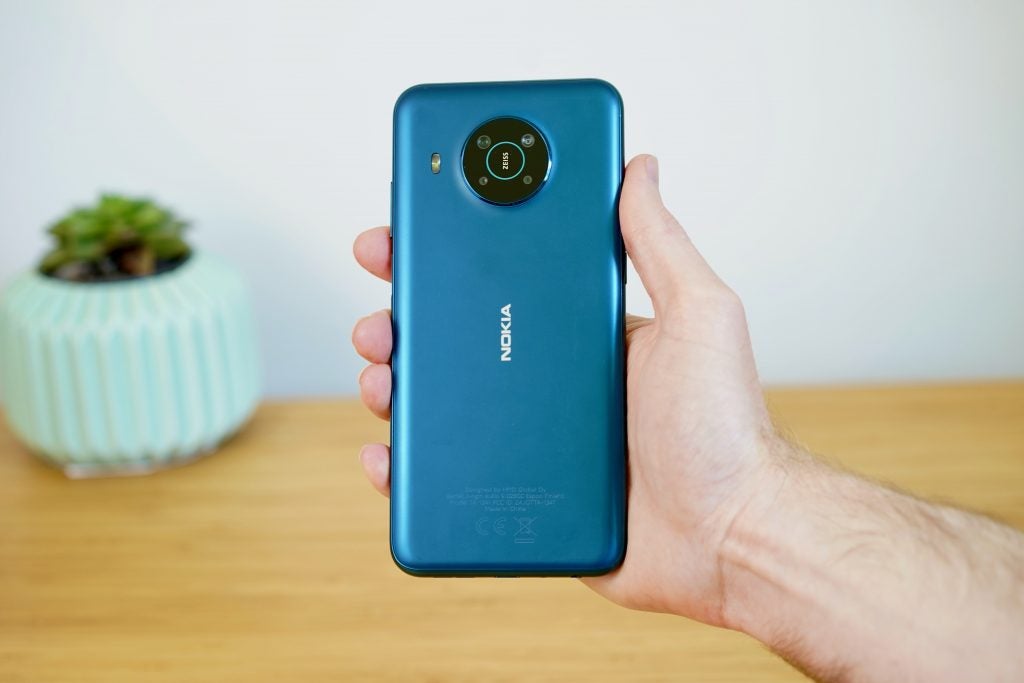
The front of the phone is your typical all-screen affair with a central hole-punch selfie camera, although the bezels are perhaps a little thicker than I’d have liked, and the chunky chin even more so. This isn’t a budget phone, remember.
There are a few points to note about the edges of the phone, which are formed of a slightly glossier plastic. On the right edge is a fingerprint sensor stashed within an indented power button, which is far more reliable than most equivalent in-display methods, if not very fast.
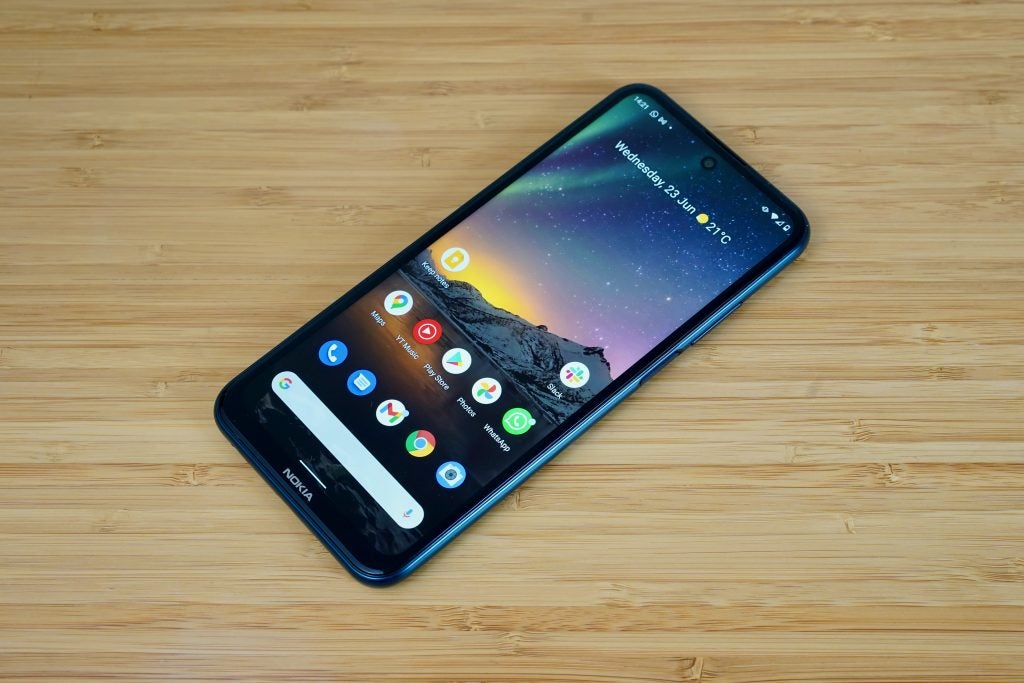
On the left edge, dead-opposite that power/fingerprint button, is a dedicated Google Assistant button. It’s an interesting inclusion in a phone that seems committed to paring things right back – perhaps HMD wanted to emphasise its commitment to the stock Android cause. But it’s rather superfluous in a world of ‘OK Google’ audible cues and power button shortcuts.
Still, it would be churlish to complain about such a hardware inclusion. What’s more galling is the omission of stereo sound, with just a single speaker positioned along the bottom edge. It’s quite possible to get such a feature in a £300-400 phone, as we’ve seen with the Poco F3, the Samsung Galaxy A52 5G, and the Xiaomi Mi 11 Lite 5G.
While HMD clearly put the X20 through the wringer, one area it perhaps didn’t test quite so diligently was the phone’s signal reception. My flat doesn’t have the best signal, but I experienced intermittent signal drop-outs to a greater extent than with many other recent handsets. It’s hard to be scientific about this – there are so many variables when it comes to mobile signal issues – but this was my experience.
Perhaps my favourite design feature here is the bundled case. Rather than the usual rubbery plastic cover that you’ll inevitably cast aside, the Nokia X20’s freebie is made of a compostable material with the kind of stylishly flecked finish that you might expect to see on a funky kitchen counter.
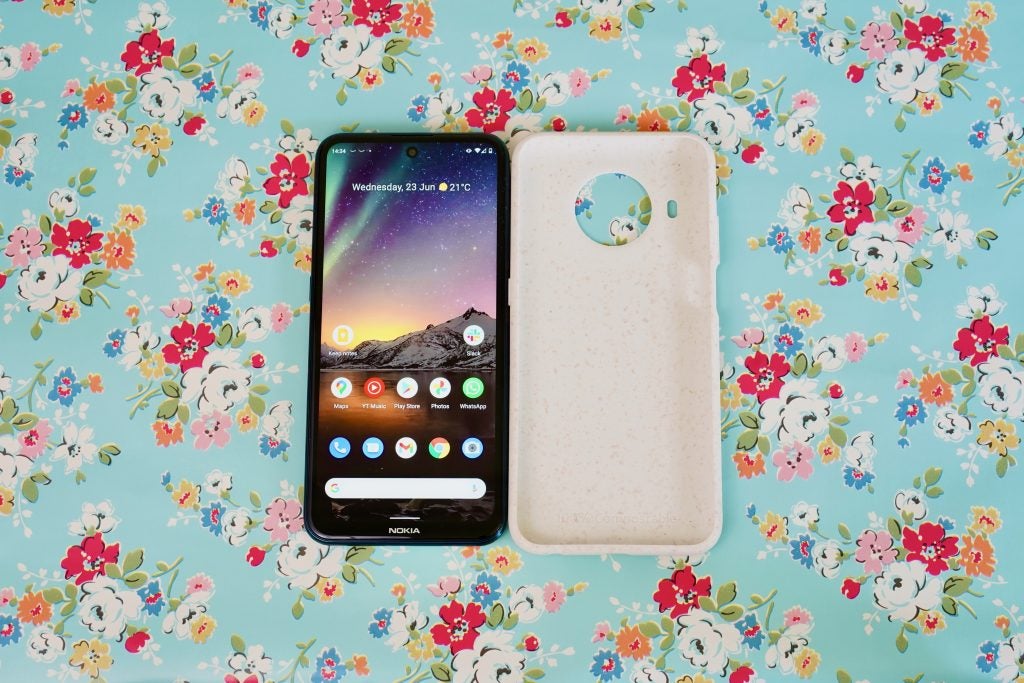
Sticking with the eco-friendly theme, if you register your X20’s IMEI number, Ecologi will plant 20 trees for you. While the non-inclusion of a power brick grates somewhat, Nokia is at least paying more than mere lip service to going green.
Moving on to the X20’s display; it’s hardly a prime component. It might be protected by robust Corning Gorilla Glass 5, but the screen technology itself is somewhat lacking.
It’s plenty big enough at 6.67 inches, and it isn’t lacking for pixels with a 1080 x 2400 (FHD+) resolution. But it’s only an IPS LCD rather than an AMOLED panel, and it only refreshes at 60Hz.
Contrast that with the Poco F3 or the Samsung Galaxy A52 5G, which both manage to include similarly large and sharp AMOLEDs with 120Hz refresh rates, and the comparison doesn’t exactly flatter the X20. But really, most £300-400 Android phones will give you either AMOLED or an elevated refresh rate.
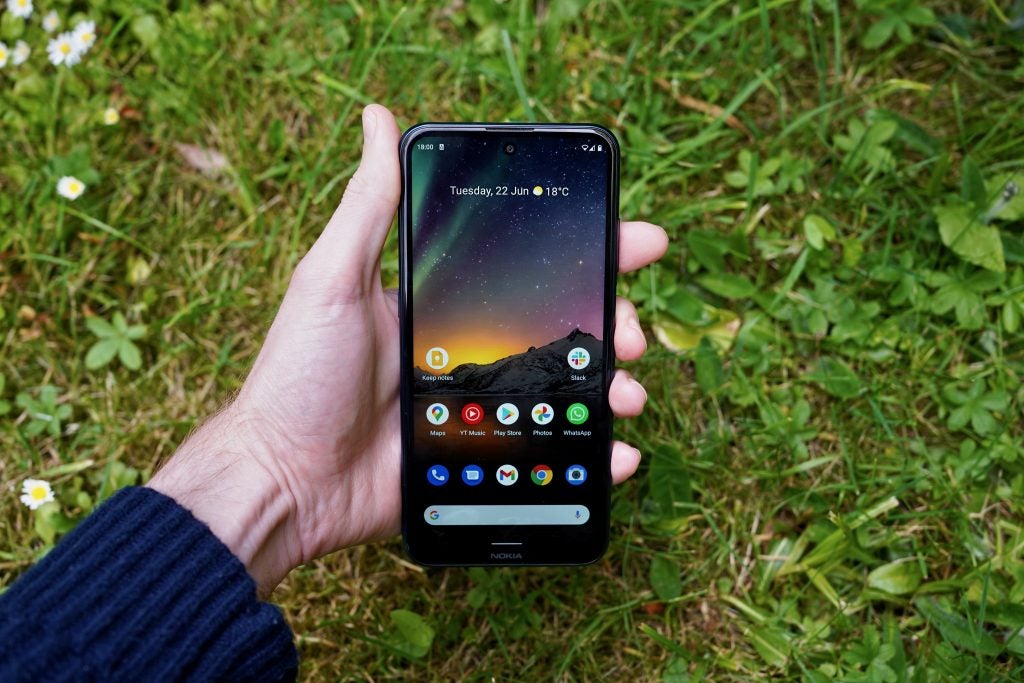
Whether it’s this 60Hz refresh rate or the Nokia X20’s underwhelming performance (likely to be a bit of both), flicking between homescreens and scrolling through web pages feels laggy and ponderous in a way that it simply doesn’t on rival handsets.
Camera
- 64MP main sensor takes crisp, bright shots
- 5MP ultrawide lacks detail
- Lots of Pro features, but no OIS
The Nokia X20 might lack a little in general specification terms, but its main 64-megapixel camera stands its ground pretty well. I was able to take bright, crisp shots in good lighting, with HMD’s effective auto-HDR generally reining in extreme areas of brightness and shade.
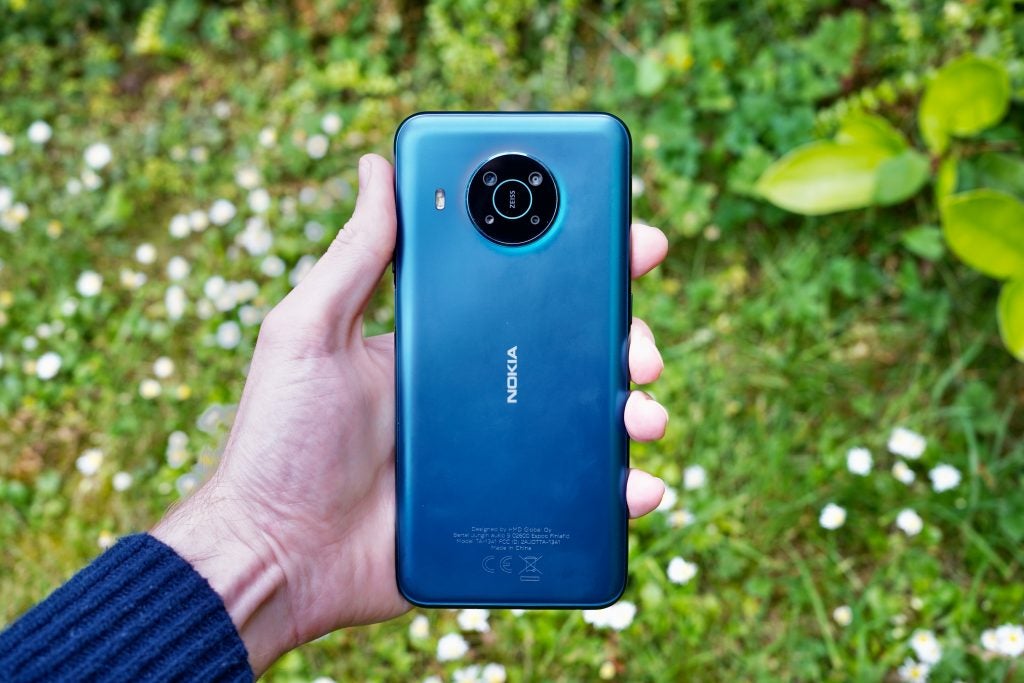
There is a slight tendency to overexpose bright areas, especially when shooting on sunny days. But generally, this lead sensor is quick and precise.

The other three sensors aren’t up to much, however. First up is a measly 5-megapixel ultrawide, which captures landscape shots with a completely different tone to that capable wide sensor. These ultrawide shots lack detail, even in the centre of the image.

Backup for these main sensors comes by way of a 2-megapixel macro and a 2-megapixel depth sensor, neither of which is really worth spending much time on. The macro camera is too low-res to be of any use – when the whole point of such a sensor is fine detail, a lack of pixels is fatal.
The depth sensor is there to service the phone’s Portrait mode, helping to separate the subject from an artificially blurred background. It’s reasonably successful, although Portrait shots seem to lose a fair amount of the camera’s HDR composure, bleaching out skin and backgrounds alike.

The same is true of selfies taken with the Nokia X20’s 32-megapixel front camera. Shots that looked reasonably sharp and balanced in regular shooting suddenly become badly over- or under-exposed in selfie Portrait mode.

I’m not sure how extensive the claims of ZEISS optics are, but I certainly didn’t notice any weird optical effects when shooting into the sun – something from which even many so-called flagship phones tend to suffer. Less convincing is the inclusion of a number of ZEISS Portrait effects, which swirl and distort the background in artificial ways.
Night mode is generally a bit of a write-off. There’s lots of noise in less-than-pitch-black conditions, as well as some slightly erratic focusing. It’s borderline useless in very low-light situations, where little to no attempt is made to brighten the scene. If you get it right, with an appropriately strong light source, you can capture a pretty crisp shot like my one of a pub door. But even then, you don’t want to stare too much into the murky background.


Video recording is modest, with a hard limit of 1080p at 60fps. You also get a Cinema mode that records at a more – you’ve guessed it – cinematic 24fps, and with a wider 21:9 aspect ratio. This also encourages you to shoot in H-Log format to provide more dynamic range, and you can use some fancy ZEISS effects to add flares to your footage.
This is all well and good, but without OIS, your videos are going to look as shakily amateurish as those from any budget phone.
Performance
- Snapdragon 480 isn’t quite powerful enough for the money
- There is 5G
- Android 11 without the bloat and multiple updates
In years past, we wouldn’t have expected particularly great performance from a lower-mid-range phone. And while top-notch performance still isn’t the norm, it’s now quite attainable. The Poco F3 and the Xiaomi Mi 11 Lite 5G both lay on a level of performance that wouldn’t have been out of place in a 2019 or even 2020 flagship.
Any way you cut it, the Nokia X20 doesn’t quite keep up. That’s a result of the provision of a Snapdragon 480 5G SoC, which, while being a fairly new 8nm chip, doesn’t exactly tear up trees on the performance front. An offering of 6 or 8GB of RAM is pretty much par for the course.
In putting the Nokia X20 through its paces, a Geekbench 5 multi-core score of 1655 and a single-core score of 506 places the phone well below the likes of the OnePlus Nord CE 5G (1807 and 632 respectively). That phone is the same price and offers 5G, too, yet manages to also pack in a superior Snapdragon 750G chip.
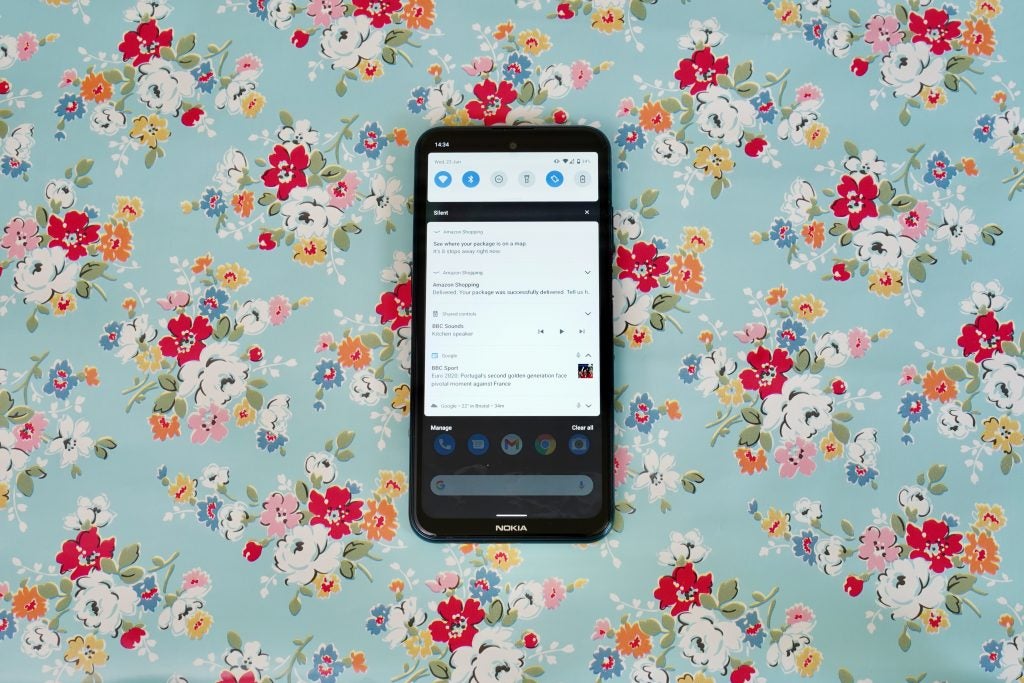
If you’re willing to drop the 5G, which really isn’t too much of a hardship at this point in time, then the Poco F3 packs a Snapdragon 870. This basically places it in darned-near-flagship territory, with scores of around 3300 on the Geekbench multi-core front.
And if you don’t want to give up on 5G? Splash just a little more cash (you don’t need to spend the full £399, if you shop around) and the Xiaomi Mi 11 Lite 5G’s Snapdragon 780G will get you a multi-core score of around 2900 – another flagship-ish result.
It’s a similar story on the GPU side of things. A 3DMark Wildlife score of 978 and a Sling Shot Extreme score of 2425 position it well behind the OnePlus Nord CE 5G (1124 and 2715 respectively). Needless to say, the X20 doesn’t even approach the other two titans we’ve mentioned in terms of graphical power.
PUBG Mobile runs with HD graphics and a High frame rate by default, and it does so fluidly. Which is fine, but the Poco X3 NFC also does that for £100 less. Meanwhile, the Xiaomi Mi 11 Lite 5G is capable of running PUBG Mobile at HDR Graphics and Extreme frame rate settings.
In terms of general performance, the phone runs along perfectly adequately. But there’s a sense of wallowiness to the day-to-day experience that simply doesn’t match up to the price. We’d expect a £300 phone released in mid-2021 to feel snappy and responsive, and those aren’t two adjectives you could ever attribute to the Nokia X20.
On the positive side, while the X20’s interface doesn’t feel especially fluid as a result of the hardware limitations, its software is otherwise thoroughly pleasant to use. As ever with Nokia phones, this is the purest take on Android you’ll get outside of a Pixel phone.
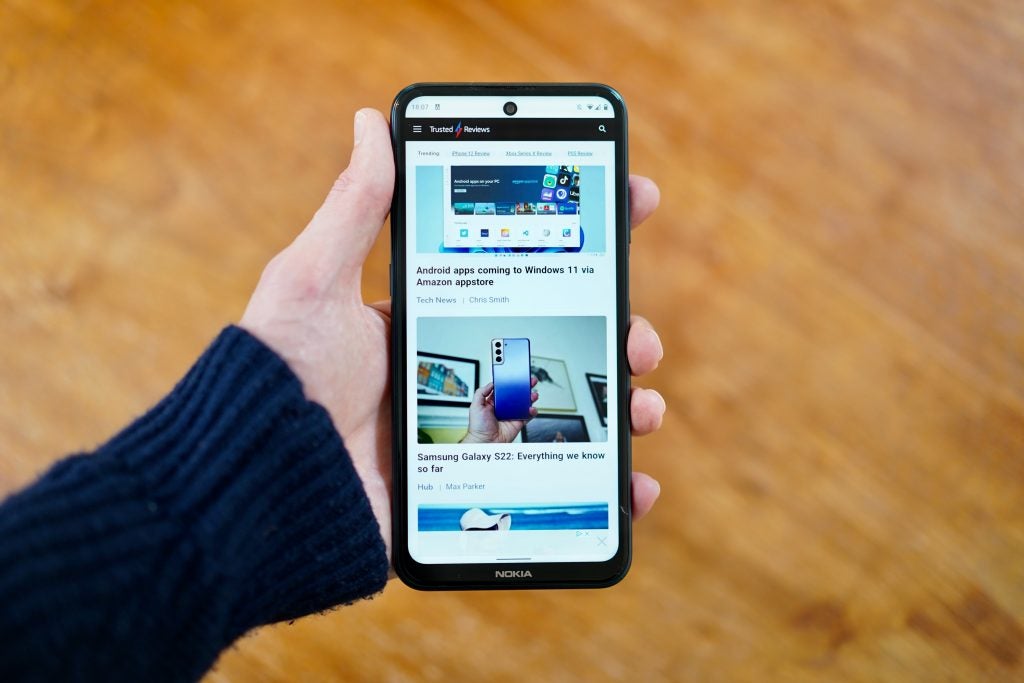
One spec where the Nokia X20 isn’t found wanting is storage. With 128GB of internal capacity as standard, and a microSDXC slot for expansion, you’re well catered for here.
Android 11 is also here as originally intended, with no reskinning, no secondary app stores, no glitzy theme options, and practically no bloatware – unless you count Amazon and Netflix as unwelcome. It’s to Nokia’s credit that it’s stuck with this ‘Android One’ format, since it adds a sense of consistency that few cheaper phones enjoy.
This approach also means that Google’s standard apps take on all the typical smartphone duties for photo management, web browsing, messaging, emailing and the like. It’s a blessed relief, to be honest, after using multiple phones from the likes of Xiaomi, Realme and Oppo, where setting up a new device can be a chore akin to tidying a messy room or tending to an overgrown garden.
Nokia’s big promise with the Nokia X20 is that it will provide three years of security and software updates, which is a pretty big deal. Few phones go that far with their software assurances, regardless of price.
The Nokia X20 also supplies 5G connectivity for a reasonable price, but this feels like a killer feature from the previous generation. It’s now possible to snag a 5G phone for around £200, if next-gen connectivity really is your priority.
Battery life
- 4470mAh battery is good for two days
- 18w wired charging
- No power brick
Nokia is making ‘two-day battery life’ claims for the X20, and in my experience that’s quite feasible. What’s interesting is that the battery, while far from small at 4470mAh, isn’t as large as you might expect.
We’ve grown accustomed to seeing 5000mAh batteries from other two-day phones. All of which makes one wonder why the Nokia X20 had to be quite so heavy, but there you are.
I found myself able to get to the end of a 15-hour day of moderate use – or four hours of screen-on time, to use a more precise metric – with just over 50% left in the tank.
The reasons the Nokia X20 can stretch this far are pretty apparent. That 60Hz LCD screen is neither fluid enough nor vibrant enough to demand too much energy. And while the Snapdragon 480 isn’t a particularly impressive chip, it’s reasonably modern and thus efficient.
When it comes to more intensive tasks, 30 minutes of intensive 3D gaming saw the phone losing 6% of its charge. That’s in the same region as budget phones with huge 5000mAh batteries such as the Oppo A54 5G and the Realme 8. Flagship phones tend to hit double digits – although, of course, they’re running those games at much higher levels.
On the recharging front, the Nokia X20 supports up to 18W wired charging, which is fairly middle of the road. It isn’t uncommon to get 33W charging support, even at this price.
What’s more, you don’t get a wall charger in the box, so you’ll need to make that provision for yourself. It shouldn’t surprise you to learn that wireless charging isn’t part of the package either.
Best Offers
Should you buy it?
You demand ongoing software support: Whether it’s a point of security, or you simply want the latest version of Android on your phone, Nokia’s promise of three years of software updates is a rare and precious provision. You simply won’t find this among any of its direct rivals.
You want the best display for the money: The Nokia X20’s display is plenty big and sharp enough, but it falls short on vibrancy (LCD not OLED) and fluidity (60Hz, not 120Hz). Again, you can do much better for the money.
Final Thoughts
The Nokia X20 is another solid, reliable handset from HMD Global – but, ultimately, we have to question its value. It’s well built, offers excellent two-day battery life, a decent main camera, plus its take on Android is refreshingly free of clutter.
We can also get onboard with Nokia’s above-and-beyond commitment to software updates. However, its display and processor appear to belong to a significantly lower category of phone, resulting in a day-to-day experience that’s decidedly below par.
FAQs
Yes, this phone supports 5G but not mmWave
There is no wireless charging here
It was released on May 12 2021

